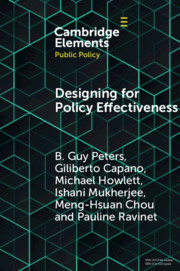Element contents
Designing for Policy Effectiveness
Published online by Cambridge University Press: 28 March 2018
Summary
- Type
- Element
- Information
- Series: Elements in Public PolicyOnline ISBN: 9781108555081Publisher: Cambridge University PressPrint publication: 22 March 2018
References
- 78
- Cited by



